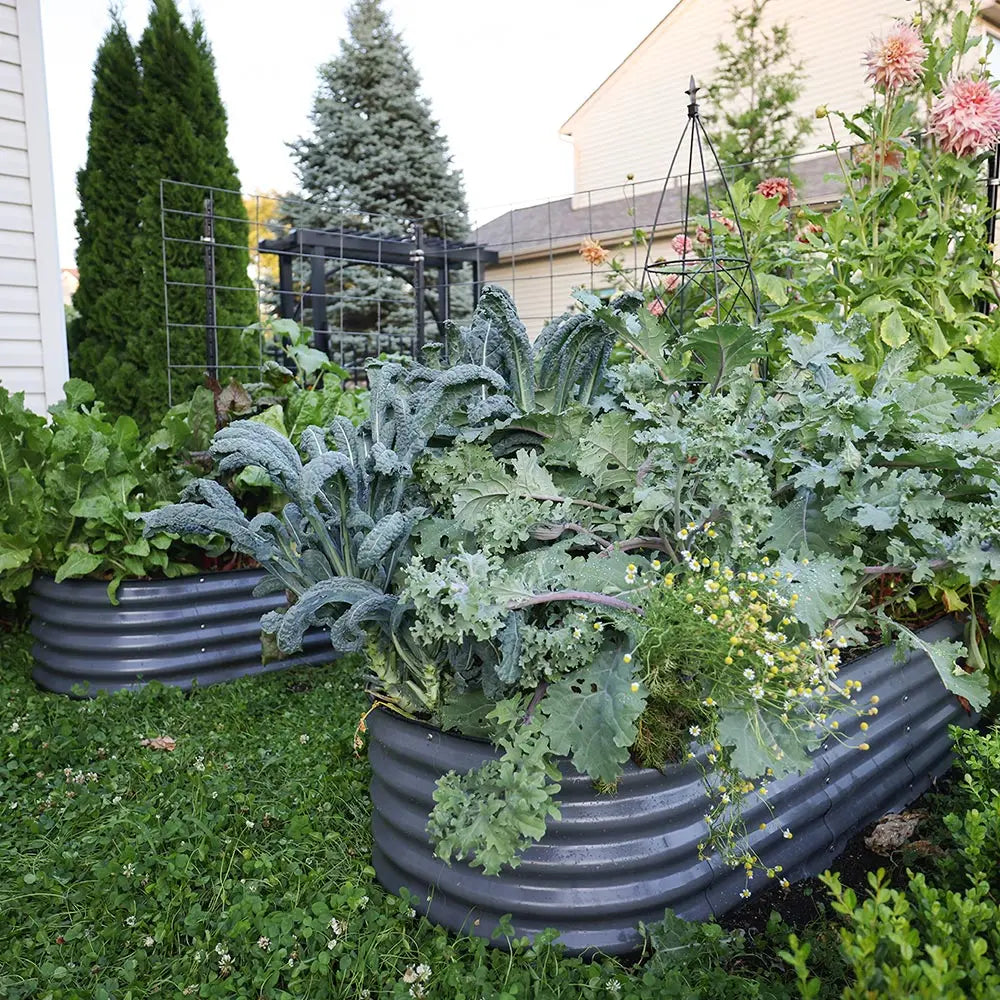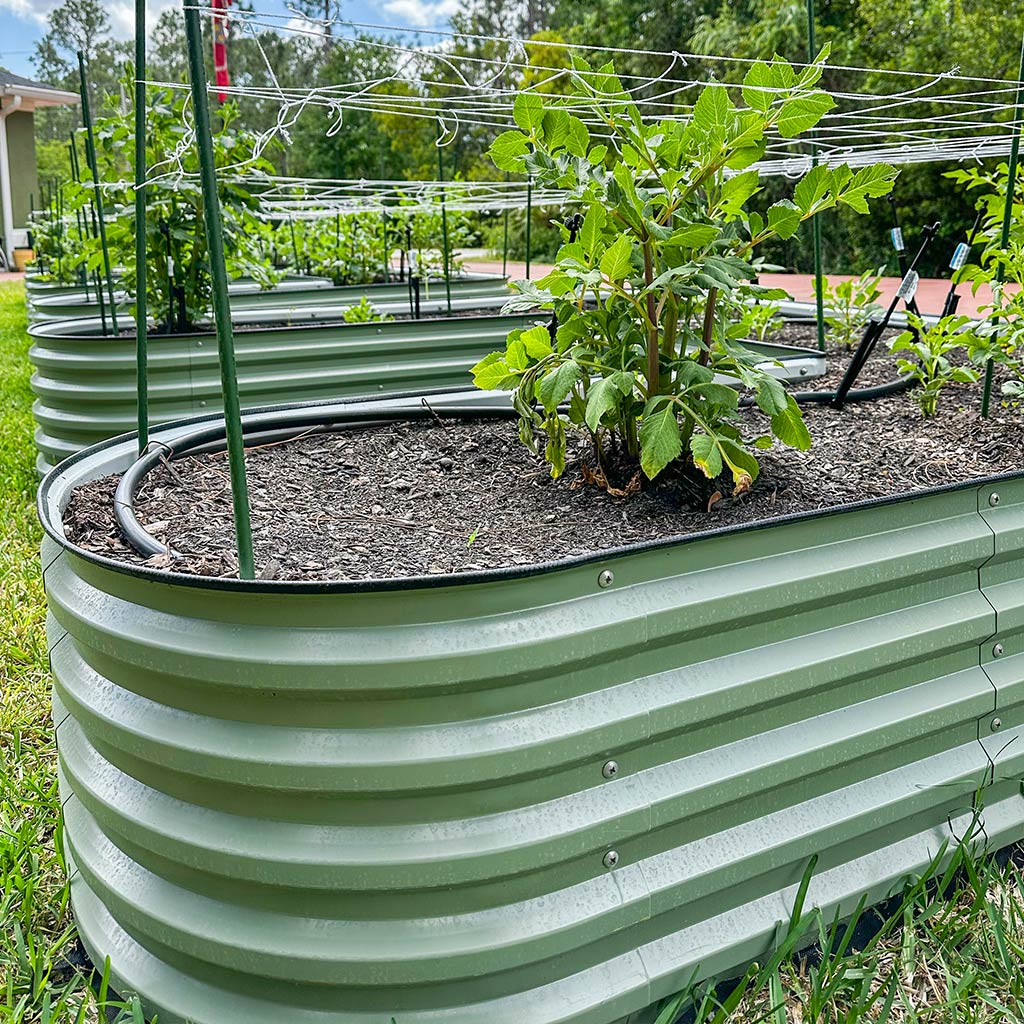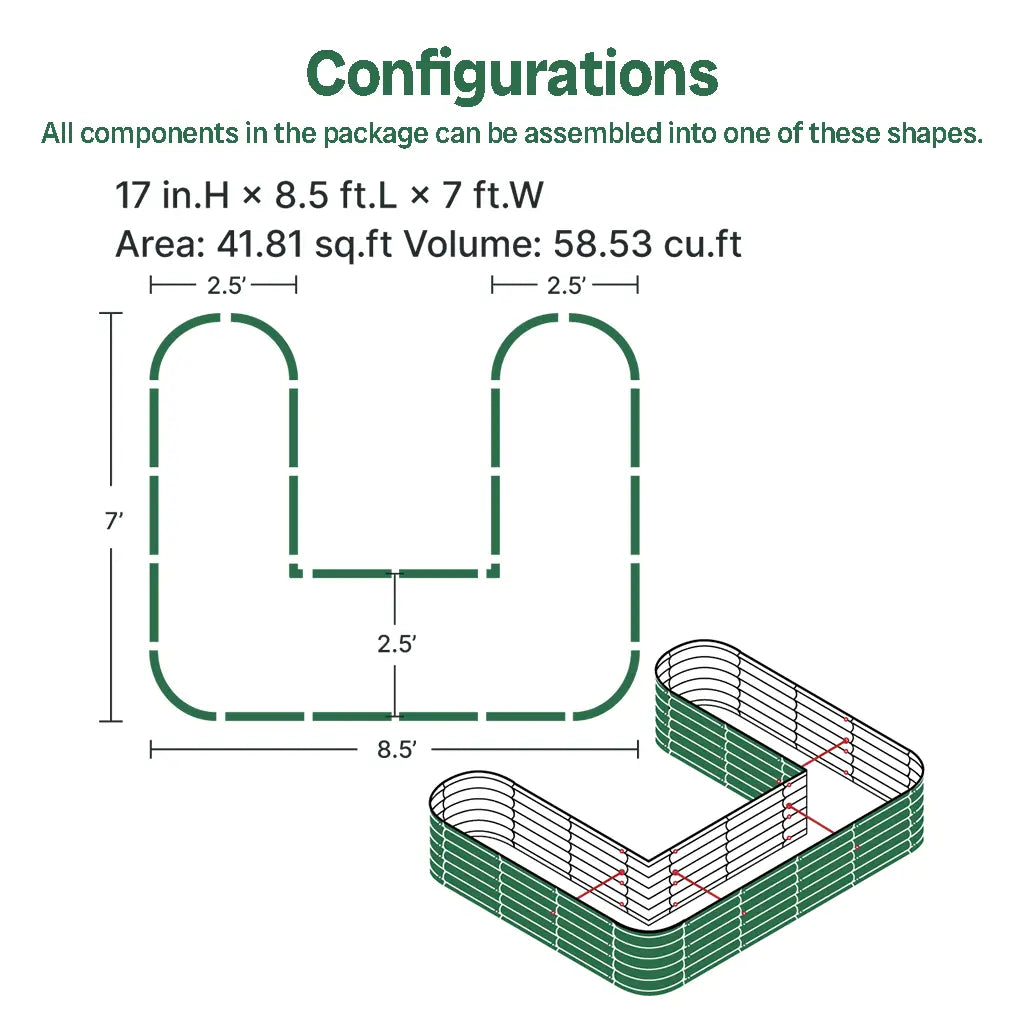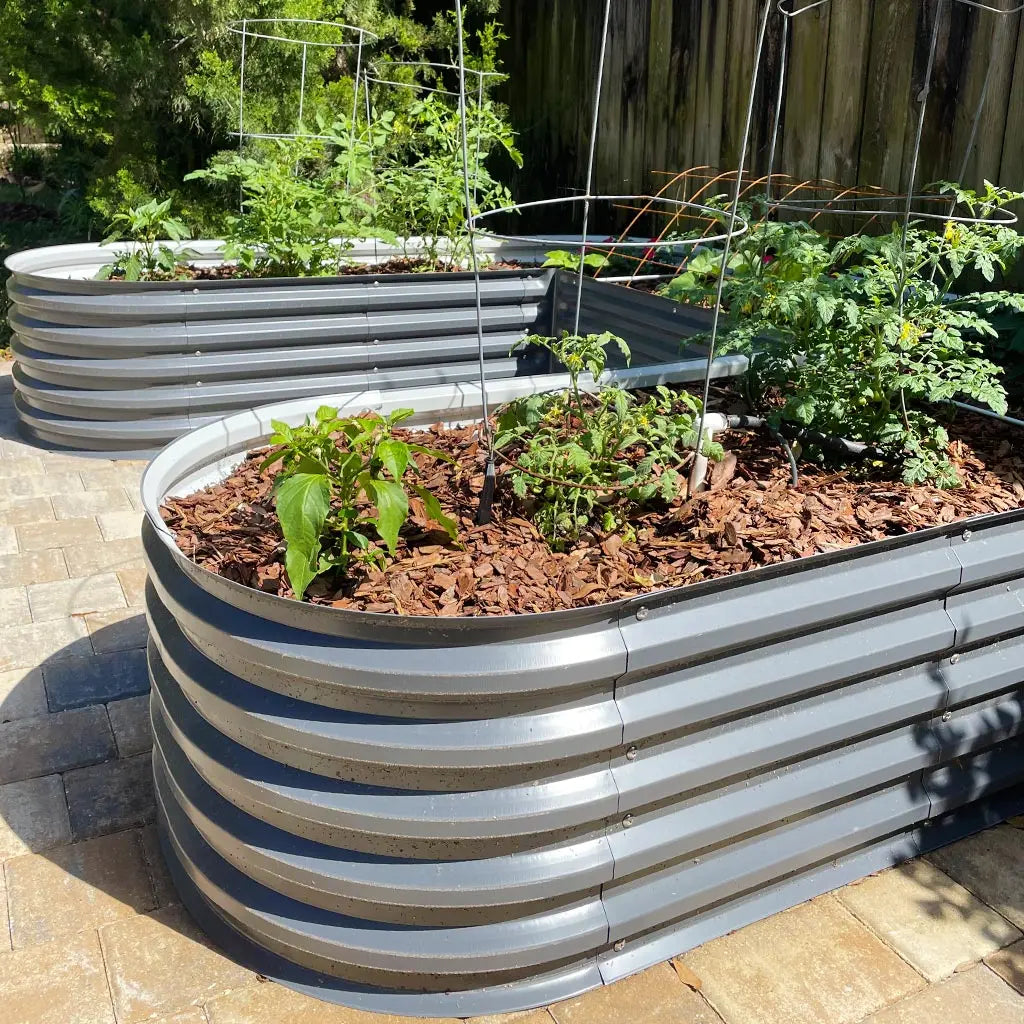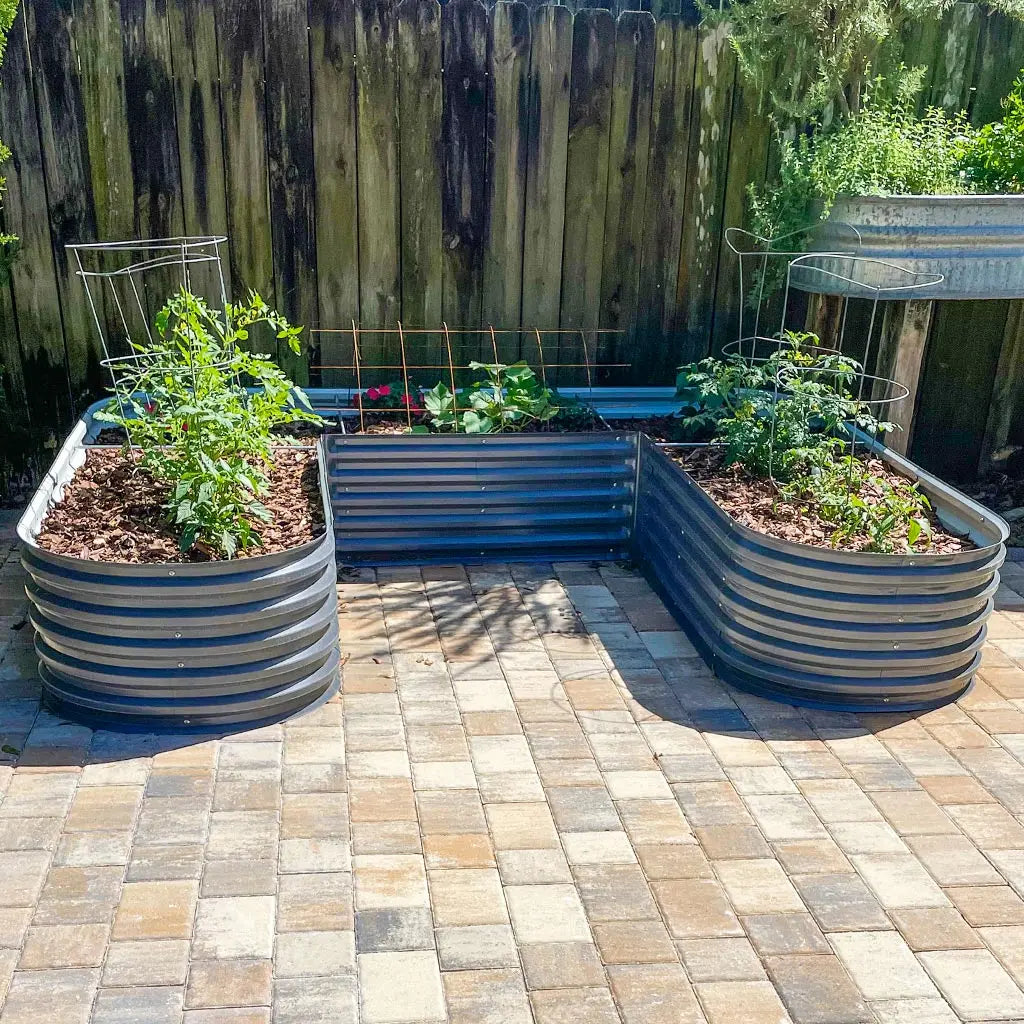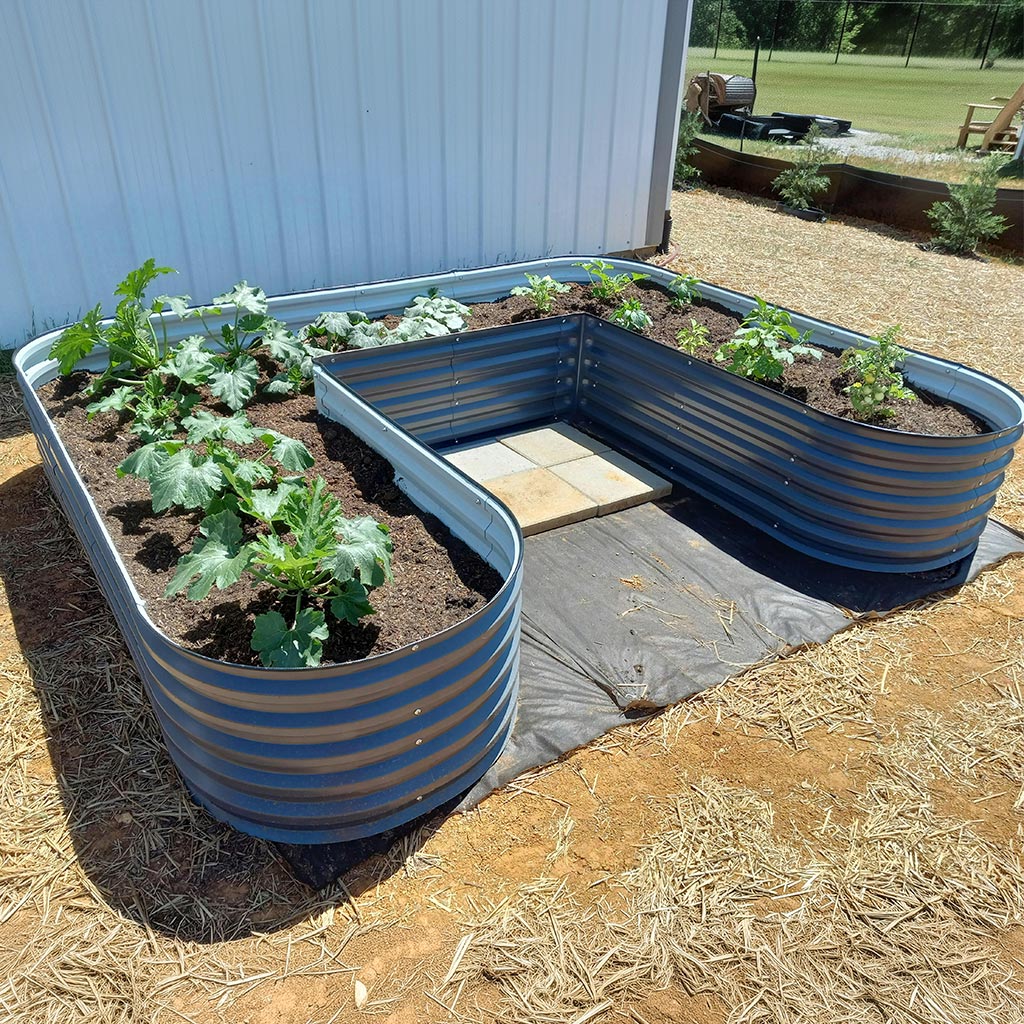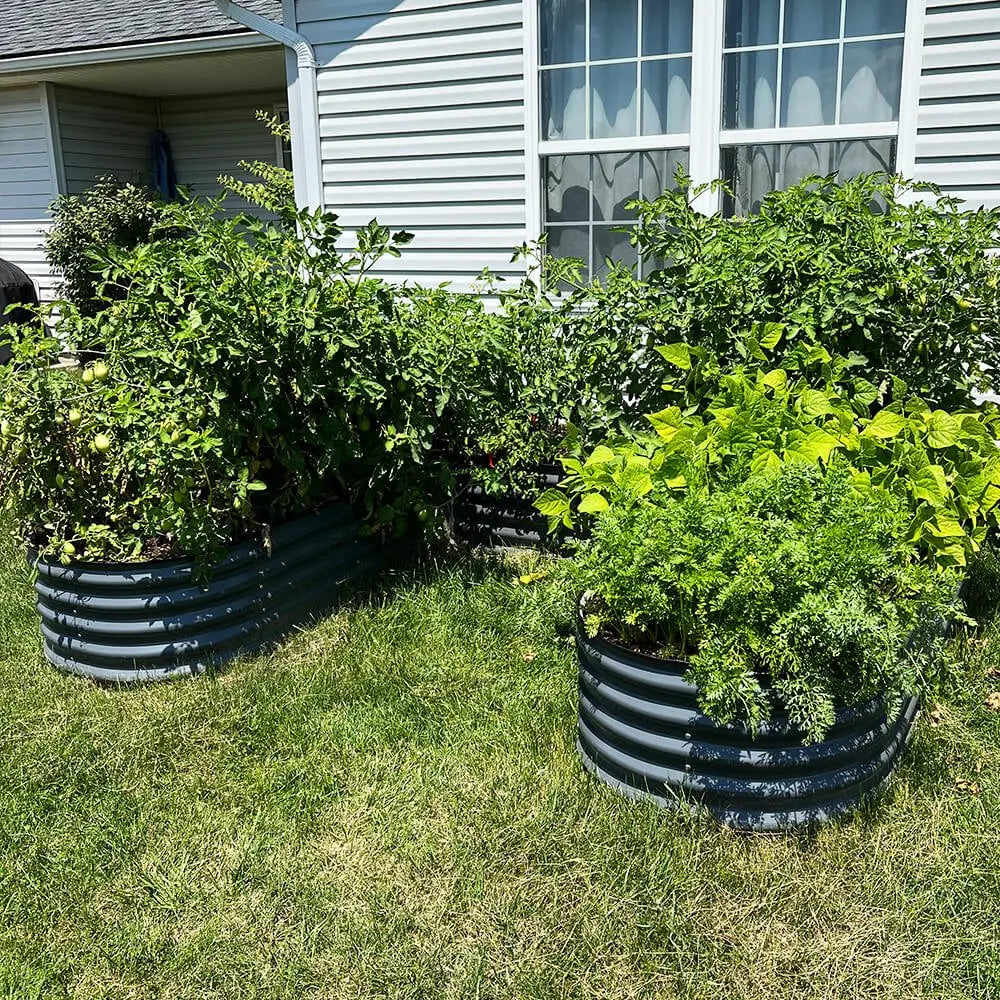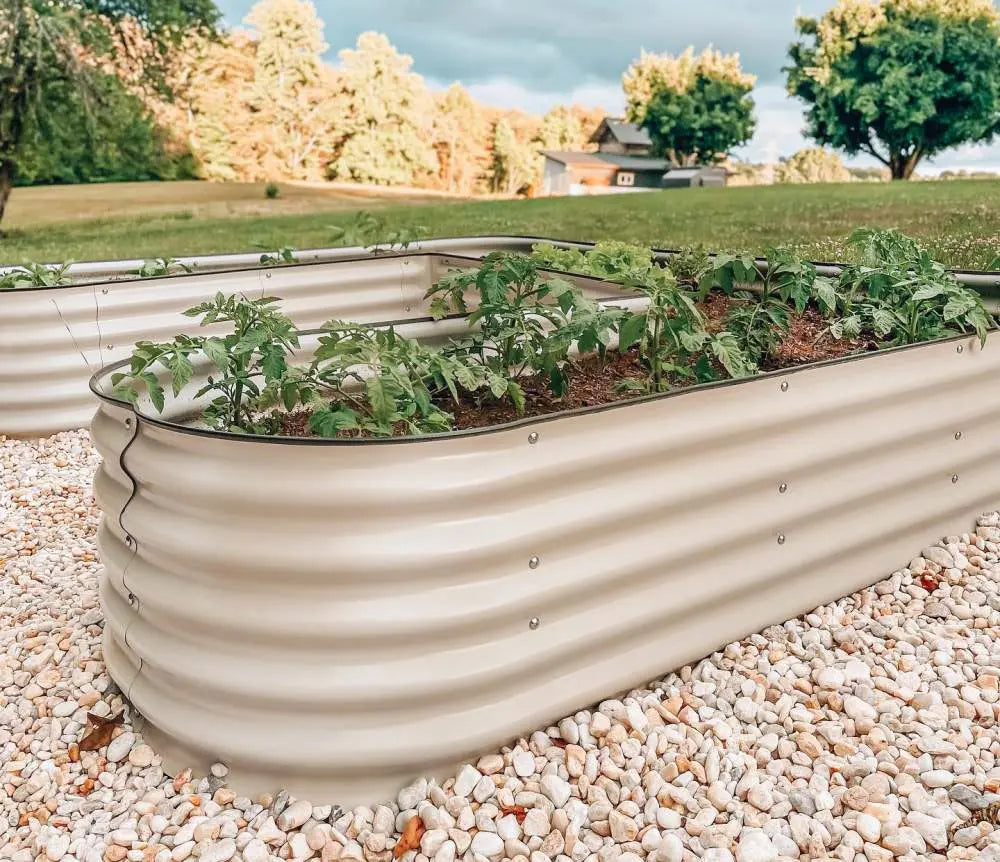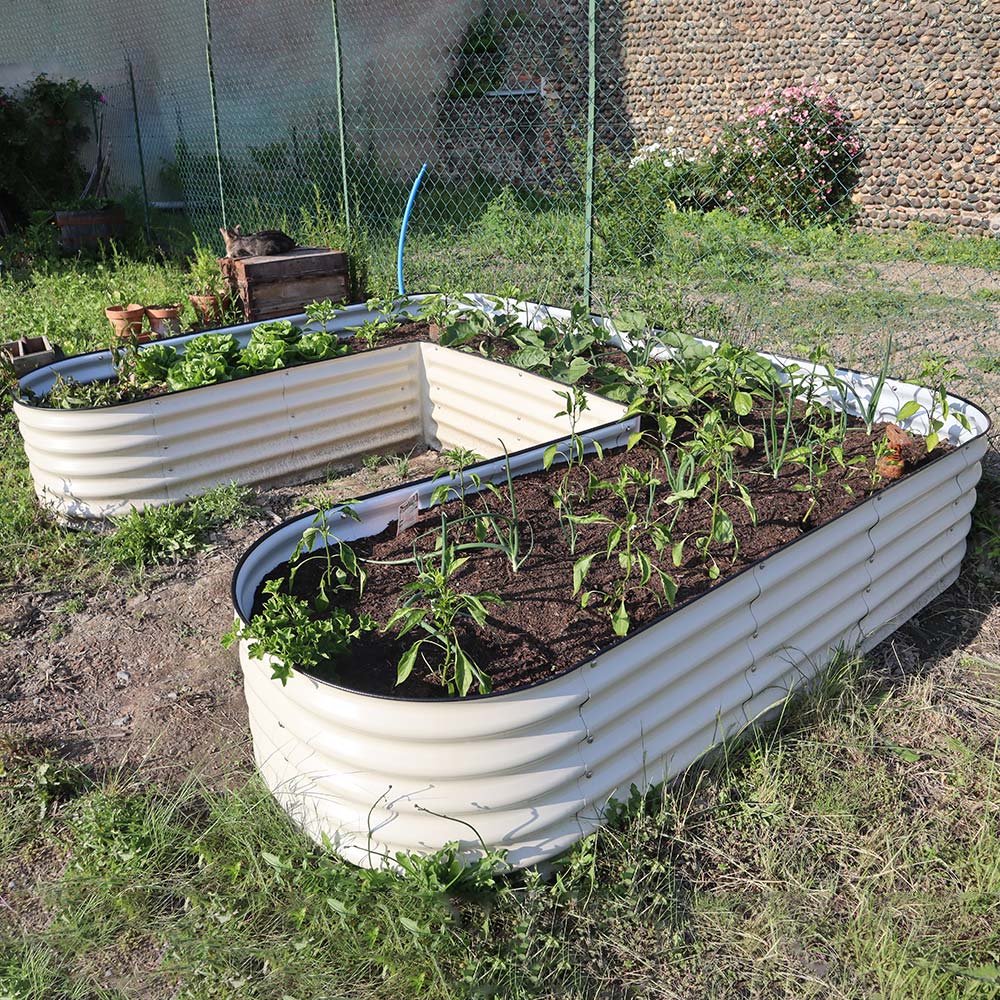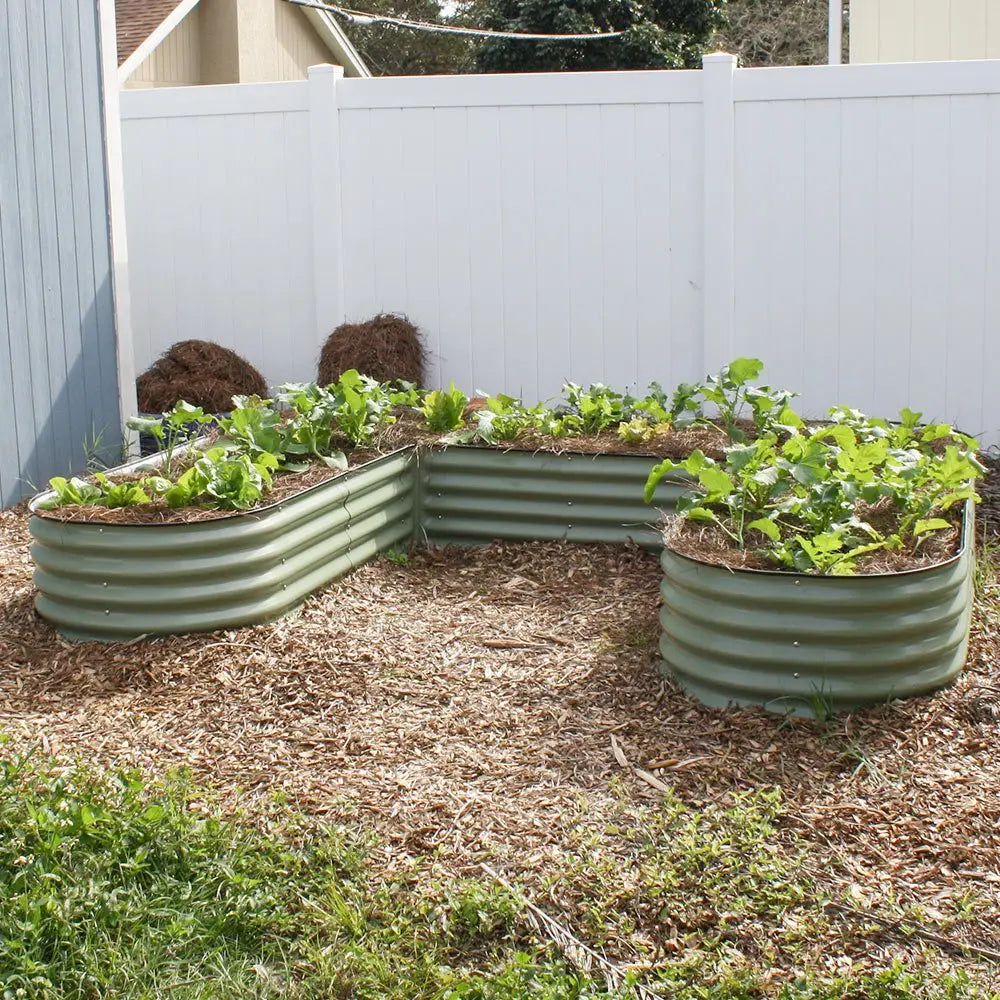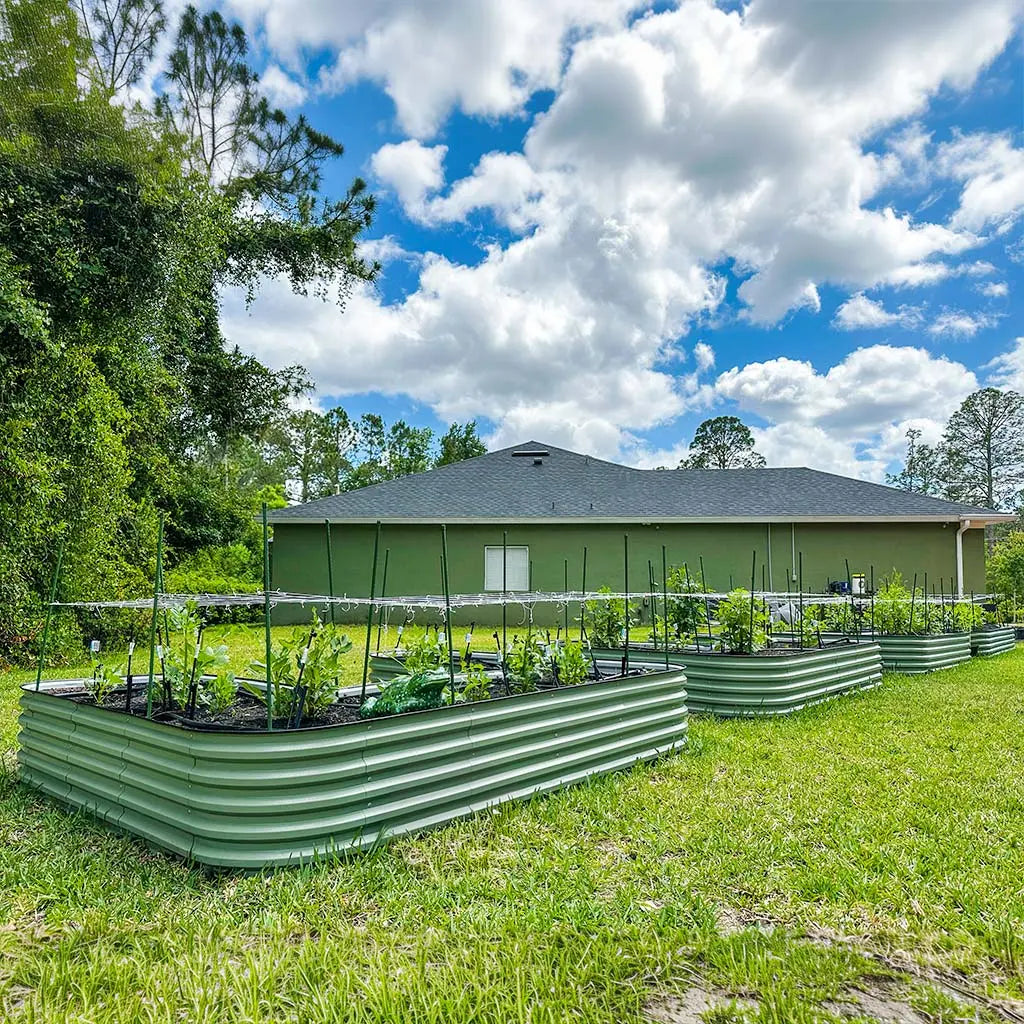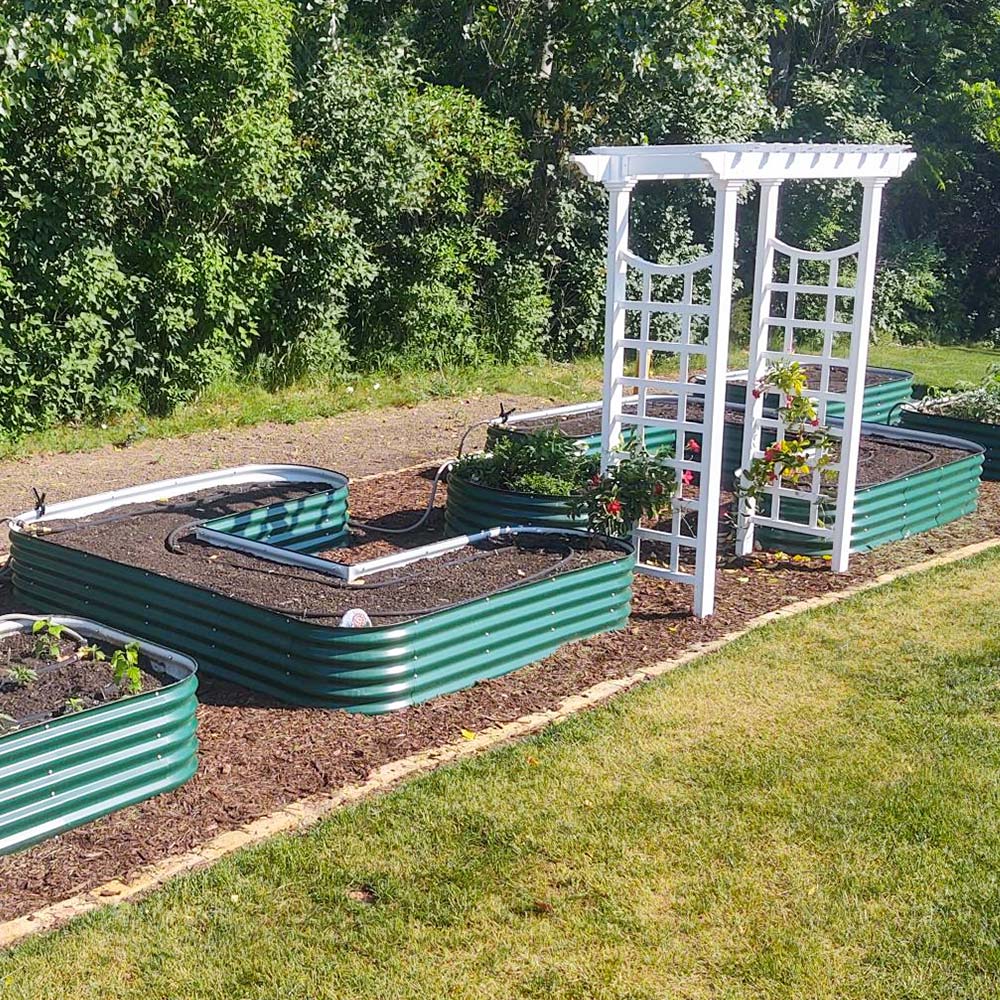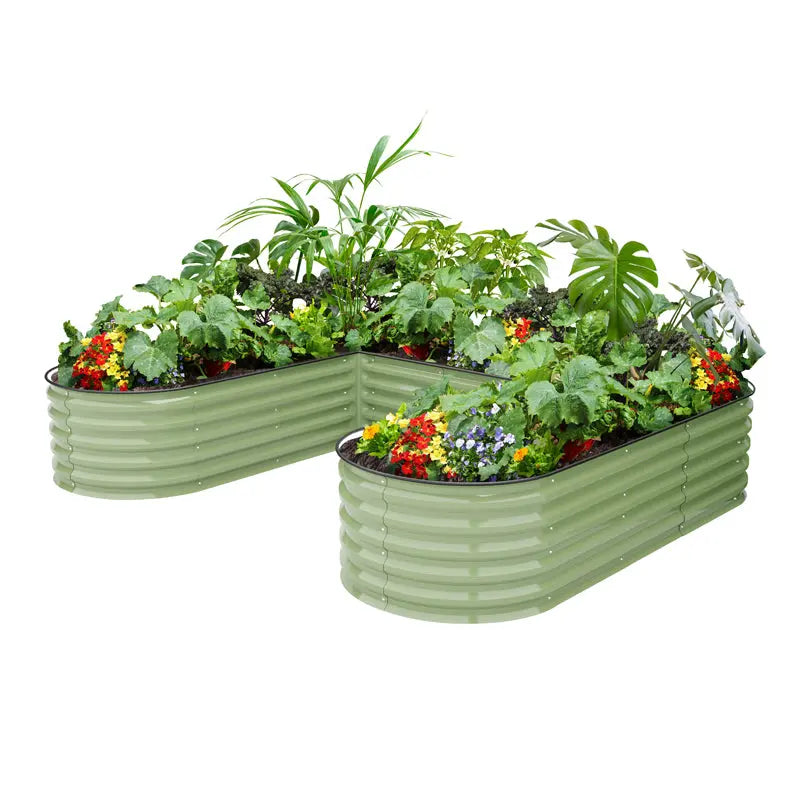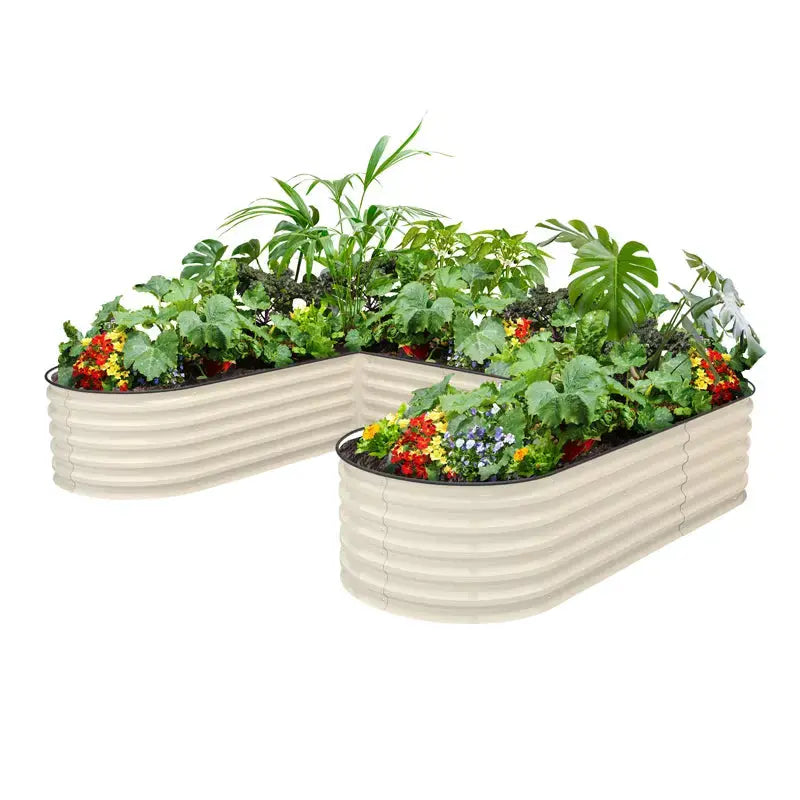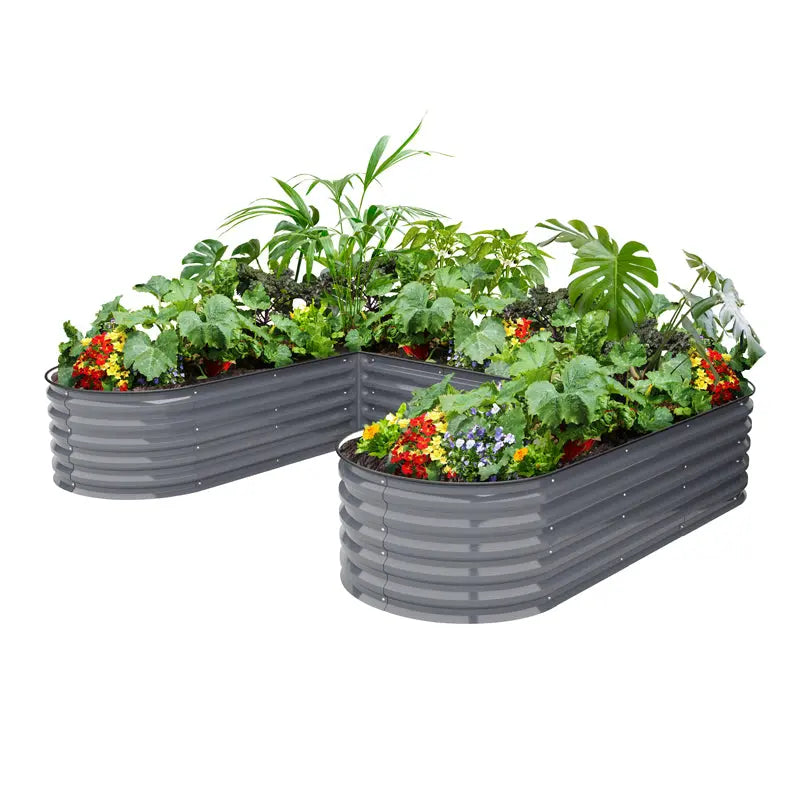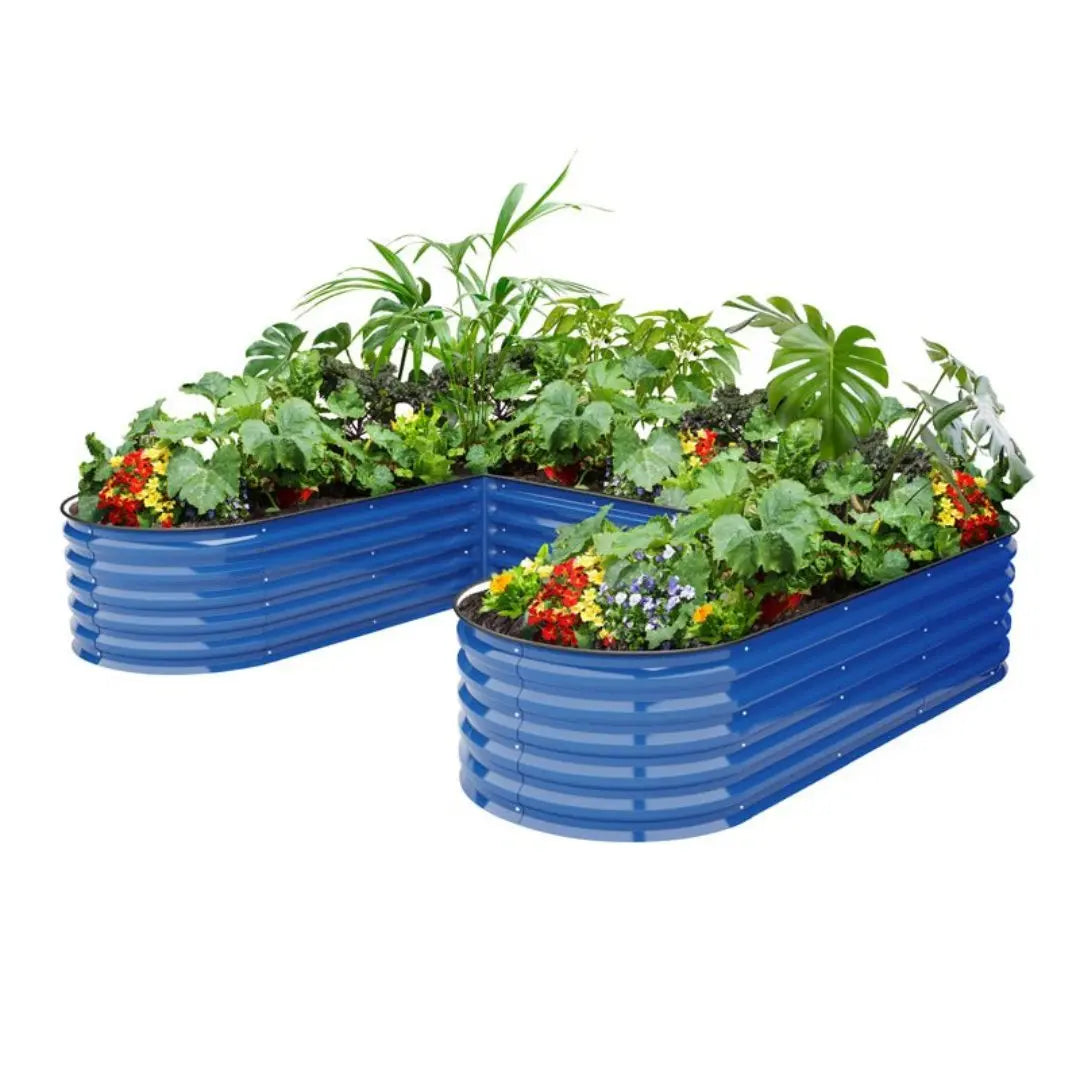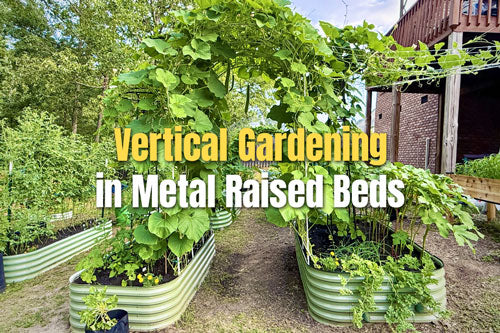How to Get Rid of Caterpillars
Caterpillars are among the most common—and most destructive—garden pests. These leaf-munching larvae feed on tender leaves and young seedlings, often causing widespread damage in a short time. In severe cases, they can even kill entire plants. However, not all plants are equally vulnerable. Caterpillars tend to prefer certain crops and flowers, especially those with soft leaves or appealing scents and nutrients.
When planning your garden layout, being strategic about plant placement—and the containers you use—can help reduce pest problems. For example, metal raised garden beds not only improve drainage and soil quality, but their sturdy design and elevated structure can also deter crawling insects from accessing your plants. While they may not stop flying pests, combining raised beds with smart crop choices and regular inspections can significantly reduce the threat of caterpillars and other harmful insects.
Now, let’s explore how to get rid of caterpillars naturally and keep your garden thriving.
Signs of Caterpillar Damage



Early identification of caterpillar activity is crucial for stopping infestations before they spread and cause widespread damage. While caterpillars are small, they feed rapidly and can harm your plants significantly in a short time. Here are some of the most common and recognizable signsof caterpillar damage:
- Irregular holes in leaves: Caterpillars often chew uneven holes along the edges or center of leaves. In severe cases, they may strip an entire leaf down to its veins.
- Damaged buds and young shoots: Many caterpillar species prefer tender new growth, chewing on buds and shoots, which may prevent flowers from blooming or cause leaves to curl and deform.
- Frass (droppings): Small black pellet-like droppings on leaves or soil surfaces are a telltale sign of caterpillar feeding nearby.
- Rolled or webbed leaves: Some types of caterpillars roll or bind leaves together with silk to create hiding spots—these “leaf shelters” are especially common with armyworms and cutworms.
- Stunted growth or yellowing foliage: Heavy feeding can interfere with a plant’s ability to photosynthesize, leading to slowed development, pale leaves, or general decline.
If you notice any of these symptoms, inspect the undersides of leaves and tender new growth closely for caterpillars. Taking action early can help protect the rest of your vegetable garde. And here are The Top 10 Garden Pests and How to Control Them for your reference.
Top 7 Plants Caterpillars Love


Vegetables and flowers grown in metal raised beds are especially vulnerable. These sun—which can promote vigorous growth. However, this lush environment may also attract chewing pests like caterpillars more readily.
Here are seven plants most commonly targeted by caterpillars:
- Cabbage: A favorite of cabbage loopers and imported cabbageworms. Caterpillars often hide deep within the inner leaves, making them difficult to detect until damage is severe.
- Tomatoes: Highly susceptible to hornworms, which are large caterpillars with an insatiable appetite. A single hornworm can strip a tomato plant of its leaves in just a few days.
- Kale: Its tender green leaves serve as a feast for various caterpillar species. Even in raised garden beds, it's important to check the undersides of leaves regularly.
- Lettuce: This low-growing leafy vegetable is often targeted by nocturnal moth larvae. Without prompt action, caterpillars can skeletonize entire heads of lettuce.
- Broccoli: Not only do caterpillars chew its leaves, but they often lay eggs in the florets, reducing both yield and edibility.
- Sunflowers: Their broad leaves provide perfect shelter for caterpillars. When grown in sunny, exposed areas, sunflowers can become pest hotspots.
- Celery: The strong aroma of celery, while pleasant to humans, attracts cutworms and other moth larvae. Caterpillars typically settle at the base of leaf stalks.
Here is an eco-friendly way to control garden pest by growing marigolds. You can read the details here: Grow Marigolds in Vegetable Garden for Pest-Free Vegetables .
17" Tall U Shaped Planter Box Large Size【Upgrade 2.0】
Our U shaped planter box allows for easy access to all your plants. You can comfortably walk around the garden bed and reach all the plants without straining or walking over the garden.
The Benefits of U Shaped Planter Box
The u shaped planter box has several features that enhance its functionality and appeal. It is popular in most raised gardens due to its attractive shape and practical design.
- Ample planting space
The U-shaped design provides a large planting area for various plants.
- Easy access
The U-shaped design has an open center, making it easy to access all bed parts. This reduces the need to reach or stoop and makes planting, watering, weeding, and harvesting easier.
- U-shaped Planter Box Modular Design
The u shaped planter box designed with modular components is easy to assemble. This feature lets you adjust the size and configuration to fit your garden layout.
U shaped Planter Box Plans
When laying out u shaped planters, optimizing the planting layout is the first thing to consider. According to the light and growth needs of different plants, planting shade-tolerant plants on the inner side of the U-shape and sun-loving plants on the outer side can make full use of space and light.
Shade-tolerant plants planted inside include spinach, lettuce, bird's nest fern, button fern, ivy, bayberry, azalea, camellia, etc. These plants like a cool, moist environment and can add green to your raised beds.
Plant sun-loving plants outside, such as tomatoes, peppers, cucumbers, sunflowers, cilantro, hydrangeas, azaleas, marigolds, and so on. These plants like sunlight and can add vitality to your raised beds.
In addition to that, vegetables that grow in different light conditions. On the shade-tolerant inside, you can try growing beets, which can grow well in low-light conditions. Cabbage is also adapted to semi-shade conditions and grows quickly.
On the sun-loving outer side, beans such as string beans and navy beans prefer sunny conditions that help them grow and bear fruit. Carrots and squash also need full sun to grow well and make the most of light conditions on the outside.
How to Get Rid of Caterpillars Naturally

Caterpillars are among the most common—and most destructive—garden pests. These voracious larvae feed on leaves, stems, and fruits, and their rapid reproduction can leave entire crops devastated in just a few days if not properly managed. While chemical pesticides offer quick results, many home gardeners prefer natural, eco-friendly methods that support long-term sustainability and environmental health.
Here are several proven and widely recommended natural ways to get rid of caterpillars:
- Introduce Natural Predators: Encouraging beneficial insects like parasitic wasps, ladybugs, and birds helps keep caterpillar populations in check and supports a balanced garden ecosystem.
- Use Plant-Based Sprays: Organic solutions such as garlic spray, chili water, or Bacillus thuringiensis (Bt) can deter or kill caterpillars without harming vegetables, soil, or beneficial insects.
- Practice Companion Planting and Crop Rotation: Interplanting marigolds, mint, or thyme in your vegetable garden can confuse pests and attract helpful pollinators and predators, creating a natural barrier against infestations.
- Apply Physical Barriers—The Most Effective Preventative: Proactive protection is essential in natural pest control.
This is where Vegega's raised bed cover plays a crucial role. Specially designed to fit over metal raised beds, this high-durability, weather-resistant mesh cover effectively shields your crops from moths and butterflies before they can lay eggs—interrupting the pest lifecycle right at the source.
Compared to traditional in-ground planting, the combination of metal raised beds and a fitted cover provides a more controlled, enclosed growing space. This setup significantly reduces the likelihood of pest outbreaks and creates a cleaner, safer gardening environment.
For best results, we recommend using the raised bed cover continuously during peak caterpillar seasons (typically late spring through early summer), alongside routine garden inspections and supplemental natural sprays. Here are more Eco-Friendly Pest Control Methods for Raised Bed Gardens.
Do Raised Garden Beds Attract Fewer Pests?

Compared to traditional in-ground gardening, metal raised beds offer a natural advantage in pest control—especially when it comes to reducing issues with caterpillars, slugs, and ground-dwelling beetles. This benefit stems not only from the physical design of the beds themselves, but also from their compatibility with integrated pest protection systems like raised bed covers.
Here’s why metal raised beds are more effective in minimizing pest pressure:
- Elevated Structure Limits Ground Pest Access: Many caterpillars and other pests rely on ground-level vegetation or weeds during their early life stages. With growing surfaces raised 11 to 32 inches above ground, metal beds create a physical barrier that significantly lowers the risk of pest infestations from below.
- Improved Drainage Reduces Breeding Grounds: Unlike in-ground beds, which often suffer from pooling water and dense weeds, raised beds offer excellent drainage. Drier, cleaner soil conditions make it harder for pest eggs and larvae to survive and hatch.
- Easily Paired with Protective Covers: Products like Vegega’s raised bed cover can be securely fitted onto the metal frame to shield crops from flying pests, including moths and butterflies, while also protecting against extreme weather that may worsen secondary pest outbreaks.
- Creates a Cleaner Growing Environment: Raised beds eliminate muddy, compacted walkways and foot traffic, which helps reduce the presence of pathogens and insect larvae.
- Limits Contact with Ground-Dwelling Insects: Many common garden pests—such as slugs, nematodes, and certain beetles—live close to the ground. The elevation of metal beds naturally deters their access to your crops.
If you're looking for a practical, science-backed way to reduce caterpillar infestations and other pest issues from the ground up, metal raised garden beds—especially when paired with a durable raised bed cover—offer a cleaner, more controlled, and long-lasting solution for healthier crops.
Conclusion
Caterpillars may be among the most common garden pests, but with the right strategy, they don’t have to be a recurring problem. From planting pest-repelling herbs to attracting beneficial insects—and especially by using raised garden beds with Vegega’s raised bed covers—you can build a healthier, more resilient garden ecosystem.
Don’t wait for infestations to get out of hand. Start today by rethinking your garden layout and long-term pest strategy. With thoughtful plant selection, well-designed growing beds, and consistent natural management, your garden will be safer, more productive, and more beautiful year-round.

